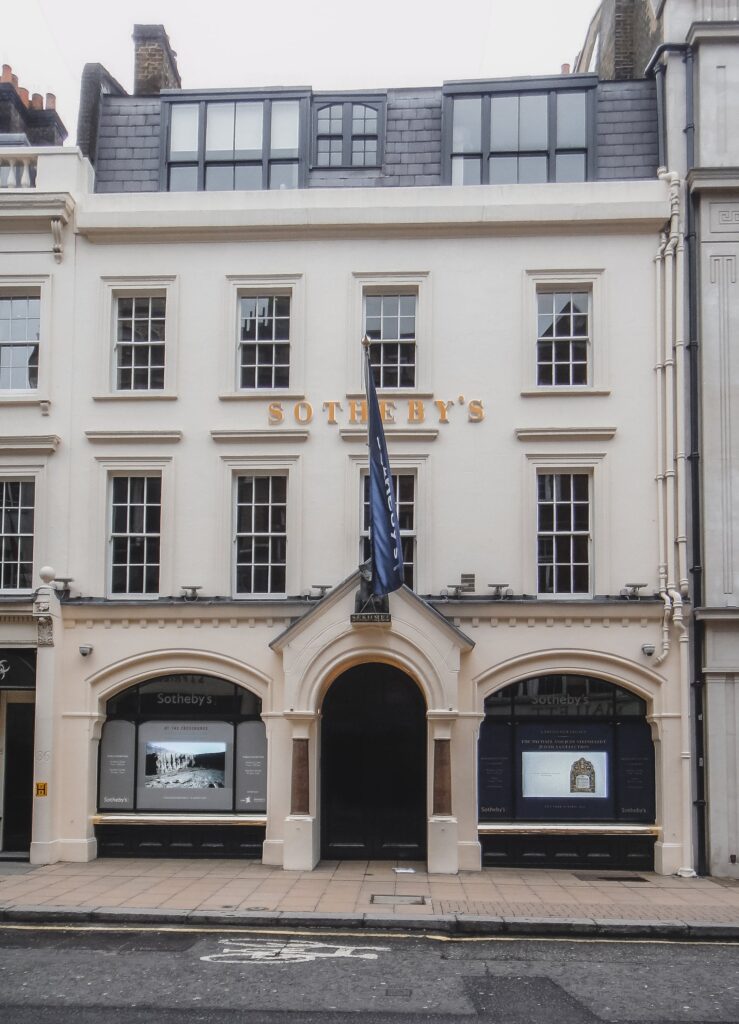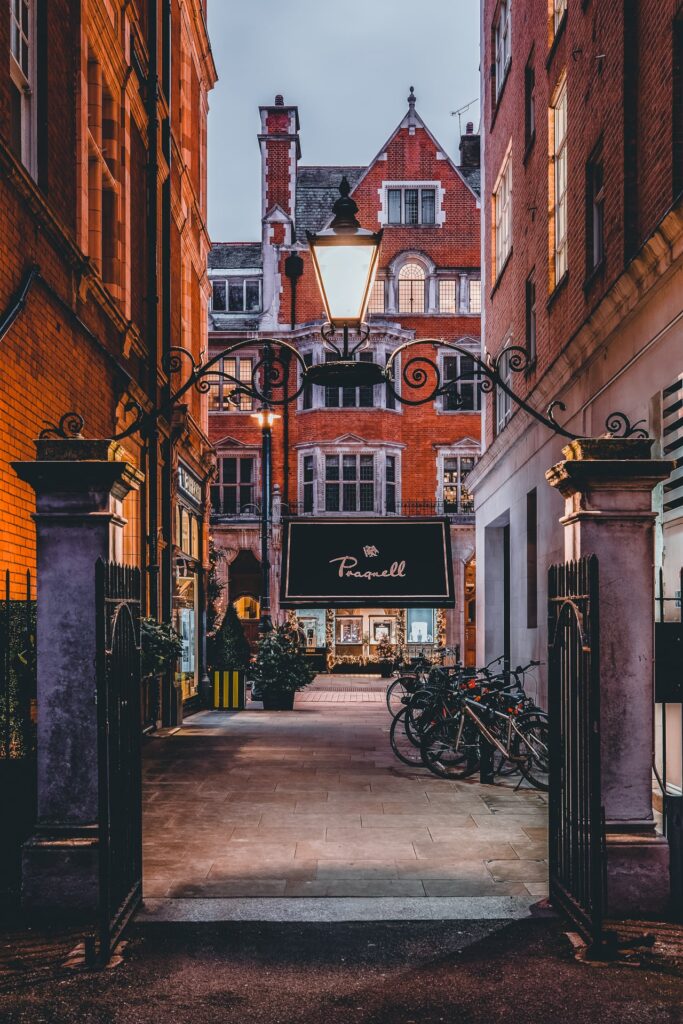Discover three captivating secrets woven into the fabric of historic Mayfair village
As one of London’s most desirable neighbourhoods, Mayfair is defined by excellence. The area is renowned as the home of cosmopolitan luxury hotels, world-famous shops and some of the city’s finest restaurants, bars and cafes. But delve a little deeper, and you’ll find there’s much more here than elegant dining and designer boutiques. Join us as we uncover three captivating secrets woven into the fabric of historic Mayfair village.
an egyptian deity in mayfair: one of the oldest outdoor statues in london
One of the world’s most prestigious auction houses, Sotheby’s was founded in 1744 by the enterprising Samuel Baker. In 1917, when Sotheby’s moved its headquarters to 34-35 New Bond Street in Mayfair, a striking black diorite bust of the Egyptian lion-headed deity Sekhmet was installed above the front entrance. Dating back to circa 1320 BC, this relic is one of London’s oldest outdoor statues. Sekhmet was the goddess of plague, chaos, war and healing – her name means “She who is powerful”. How the statue ended up in London is not known, but a Sotheby’s catalogue from 1965 offers this anecdotal tale: “There is a tradition, possibly inaccurate, that this sculpture was an unsold and unclaimed lot in the sale at Sotheby’s of the antiquities of Giovanni Belzoni [in the 1880s] but it does not appear to be listed in the catalogue.”


mayfair is home to one of the most haunted houses in london
This is a tale of 50 Berkeley Square, where George Canning, former British prime minister, lived until his death in 1827 – you can see a blue plaque commemorating Canning on the facade. The next owner, the Hon Elizabeth Curzon, reported ghostly stories when she lived there but it was really after she died (aged 91) that the strange occurrences began to unfold. A man called Thomas Myers moved in, having apparently been rejected by his fiancée, and slowly descended into madness. He was said to have slept in the attic by day and prowled the house at night with a candle in his hand. Under his ownership the house fell into disrepair. People reported hearing strange noises and seeing lights in the windows at all hours of the night. Once the house had garnered this reputation, more stories began to emerge. There is the story of a young girl murdered by a blood-thirsty servant and another recounting a tale of a man that was locked in the attic and fed through a hole in the door. According to a Mayfair Magazine article printed in 1879 a maid was sent up to the attic to prepare the room for a guest, when she let out a blood-curdling scream. She was found in a trance-like state on the floor, murmuring “Don’t let it touch me”. Over time more and more stories emerged, until fact and fiction became indivisible. One thing is for certain: 50 Berkeley Square adds a unique character to Mayfair’s polished exterior.
25 and 23 Brook Street, home to Handel and Hendrix respectively. Photo: Christopher Ison
from hendrix to handel, mayfair has a rich musical history
The German-British composer George Frideric Handel and the American guitar impresario Jimmy Hendrix both lived in our charming neighbourhood, separated only by a mere wall and two centuries of history. Handel moved to London in 1712 to become the first ever occupant of 25 Brook Street. He conducted business from the house, with clients coming to collect scores and tickets from the composer. 200 years later, in 1968, Hendrix moved to Mayfair to join his girlfriend Kathy Etchingham in the flat she rented for £30 a week at 23 Brook Street, next door to Handel’s old abode. Jimmy lived in the flat for a few months, decorating it with objects bought from the nearby department store John Lewis, as well as with trinkets picked up from Portobello Road Market. He apparently once said to Kathy that 23 Brook Street was the “first real home of my own”. Visitors included Eric Clapton, John Lennon and Sir Mick Jagger. In honour of the musical vision of Handel and Hendrix, Handel Hendrix House now offers visitors the chance to explore both residences on Brook Street, the only publicly accessible property belonging to Jimmy Hendrix anywhere in the world.
Nestled within Mayfair our luxury serviced apartments offer an ideal haven in the heart of historic London. Find out more about how our serviced apartments can enhance your extended stay.
Copyright © 2025 Hyde Park Residence. All rights reserved.


